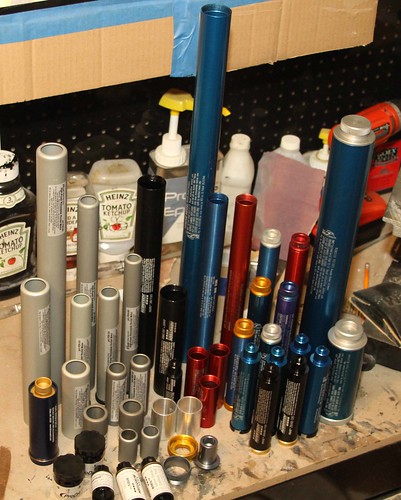Sorry folks, I wasn't clear in what I was asking about... Prefered motor 'manufacturers' is what I'm looking for.
Well....I for one have never put all my eggs in one basket. Preferring to use 2 motor makers wares. First you want to know where & who you will be buying from.
I.E. what does your local launch site vendor carry. That would be first on my list, definitely want to be able to buy from him.
At one time or another I have had AT Gorilla AMW CTI Loki Ellis Mountain in my motor box. Never all at once. AMW & Gorilla & Ellis are now extinct. I have some AT & some CTI. Cover your butt, ya never know what's going to be available at any given time. Few year back AT had a fire and for 2 yrs getting motor from them was tough. Now CTI is becoming scarce since their fire in March. So having different brands is advantageous.
There really isn't that much difference between all of them performance wise. A bit of searching & you will find the perfect motor for your flight from any of them.....[yeah I know there are a couple of "specialty motors out there] with over 500 loads out there to choose from ya'll find something.
Each company has several propellents & you can find similar thrust curves in most sizes from most companies. That is say a 2 grain 54. Want a hard hitting power lifting unit? That would be Blue thunder in AT & white Thunder in CTI.
Need a 3 grain 54 long burn? Both have those also.
I never have been one to say GO brand X it's the best....BS..they all have their finer points.
Another thing to consider. I never have been one to buy a full set of hardware in any size [29-38-54 etc] from anybody.
It's a waste..... buy & fly what ya need for the moment. I always wait to find a sale somewhere for hardware. When you really don't need it...is the best time to buy... you will wait for a good deal.
Large 38 cases will do what small 54 will and so on. Be choosey about buying hardware & ya won't have any gathering dust unused. :wink:
Edit forgot..... now with a couple of spacers a single case can do they duty of 3. I must admit though.....my favorites sizes, like a 2 Grain 54 & 6-grain 38's,. I have 2-3 of them, so I can load & have ready to fly more than one. I'll clean 'em all later, rather than at launch to re-use. Some....just 2 sizes..I have 3 of to use in clusters..
Bottom line, whatever you fly the most...will be the sizes needed. All else is collecting dust. For that once in awhile flight, I'll borrow the case. [ with the given rule....I break it, I buy it.]
As for the short answer to your question, I use AT & CTI of various sizes. But still have some AMW for research use.










